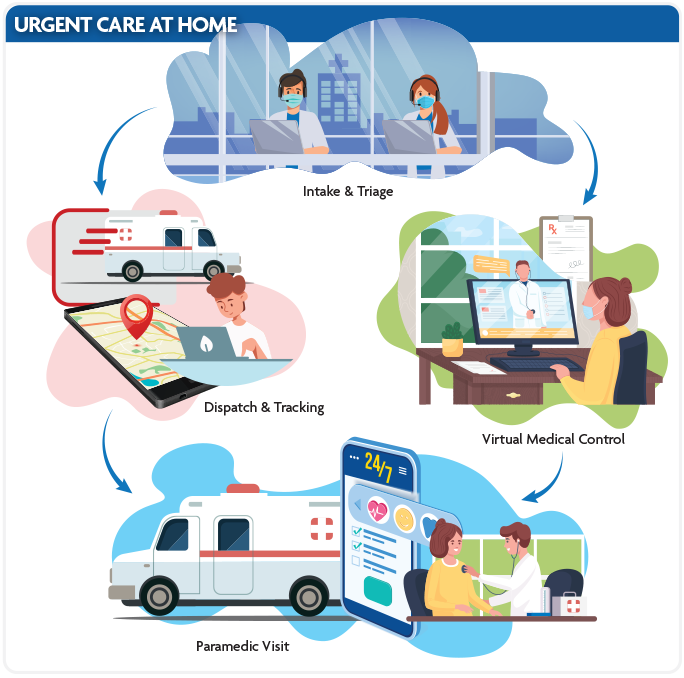A Massachusetts based provider that delivers urgent medical care in the comfort of a patient’s home, avoiding unnecessary and expensive visits to the Emergency Department and the Inpatient Hospital admissions that may follow. Piloted, pioneered and proven by a Massachusetts based insurance company, the customer provides a mobile integrated health solution that is unique in providing a full range of clinical responses matched to patient acuity for those in need of urgent medical care.
The Challenge
Having piloted the home care service delivery model, the customer was seeking development of a fully integrated platform to replace the existing solution consisting of various third party applications. As they planned to expand regionally and then nationally, they needed an enterprise grade platform that was not only scalable, but also cost effective as they scale.
After reviewing multiple proposals, the customer selected Techlogix primarily because of the team’s deep understanding of the healthcare IT domain in general, great enterprise platform functional knowledge, mature software development methodology along with strong capabilities of the proposed solution component that were designed to accelerate the development and implementation of the platform.

The Solution
The solution consists of an integrated platform that allows the entire lifecycle of referrals, intakes, triage, dispatch, encounter at home and remote medical supervision. Using machine learning, the platform is envisioned to provide highly optimized care for their target patient population while reducing the overall cost of care delivery.
Immediately after the contract award, the Techlogix team led a series of product conceptualization and definition sessions with key stakeholders. In record time, the team developed and rolled out the core integrated platform.
The end to end platform consists of:
- A central dashboard for their nursing team to orchestrate and monitor the end to end workflow of visits from the time that a request is raised by the providers, patients, or caregivers to the time that a paramedic arrives at the patient’s location and delivers the service with a physician available online to provide virtual medical control.
- A patient portal and mobile app that allows patients to request and track their visit.
- A referring provider portal and mobile app that allow providers to request and track their patients’ visits and receive clinical notes and/or other feedback from the homecare service delivery team.
- A paramedic mobile app that allows on-the-go paramedics to receive visit requests, provide their geo tracking and status, communicate virtually with the physician and document the visit.
- A physician portal that allows them to track the visits and seamlessly integrate with their EMR to provide comprehensive care to the patient and document the visit.
The Technology
The platform is built on an advanced microservices architecture on Microsoft Azure Platform as a Service (PaaS). Using NoSQL Database to support clinical documents, the platform is highly customizable as well as scalable to meet the ever evolving needs of the home healthcare service delivery model.
Built on the HL7/FHIR interoperability model, and using standard clinical data (ICD10, SNOMED, CPT, LOINC), the platform is designed to integrate with external systems to exchange clinical information. The platform is designed and built for security of information, meeting all HIPAA standards.
Benefits
Reduced time
The integrated platform helps coordinate the visit across all the stakeholders involved in the service delivery (the triage nurse, the dispatcher, the paramedic and the virtual medical control physician) resulting in reduced time to schedule and deliver the visit. A real-time dashboard provides detailed information on the status of each visit enabling the delivery team to easily reschedule visits to accommodate changes and to remove any bottlenecks in the service delivery process.
Enhanced visibility and reporting
Every step of the delivery process is instrumented to capture performance related data, thereby providing deep visibility and enforcement of service level agreements across the entire organization. Management dashboards visualize this data showing patterns of performance and providing an opportunity to improve and optimize the process.
Increased customer satisfaction
The platform has made the entire experience of the visit much smoother for the patient as well as the referring provider. Being able to request a visit through an easy to use app, and then being able to track the visit at each step, they now feel comfortable engaging with the service more frequently.



